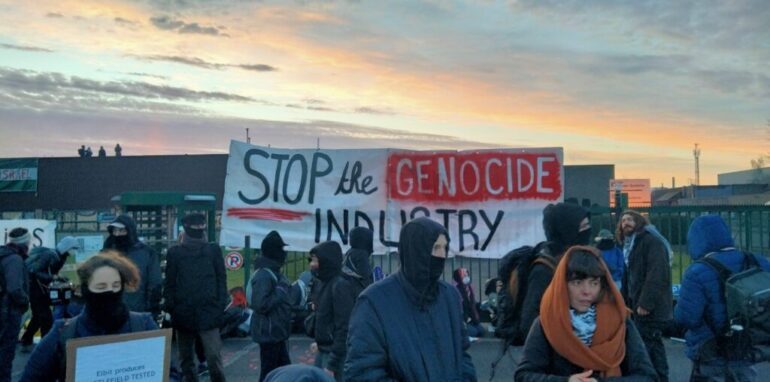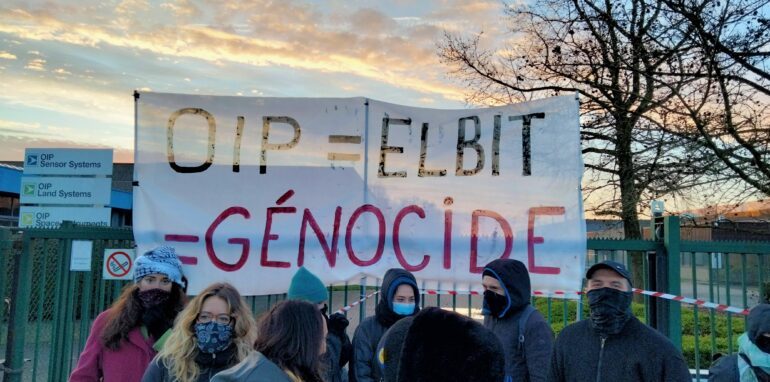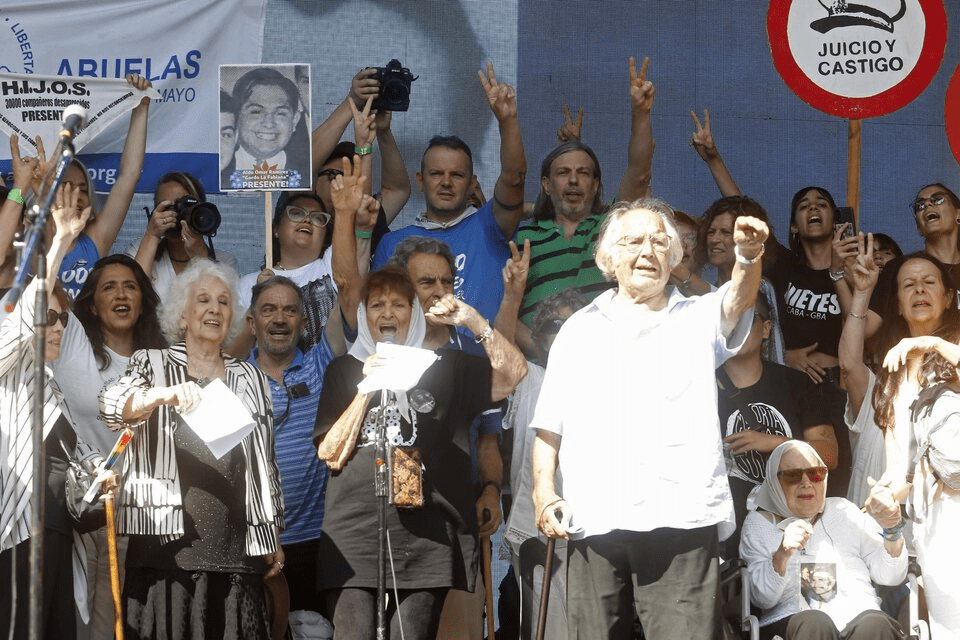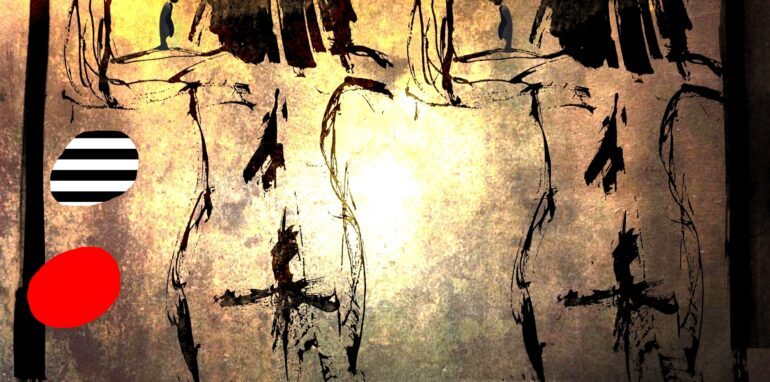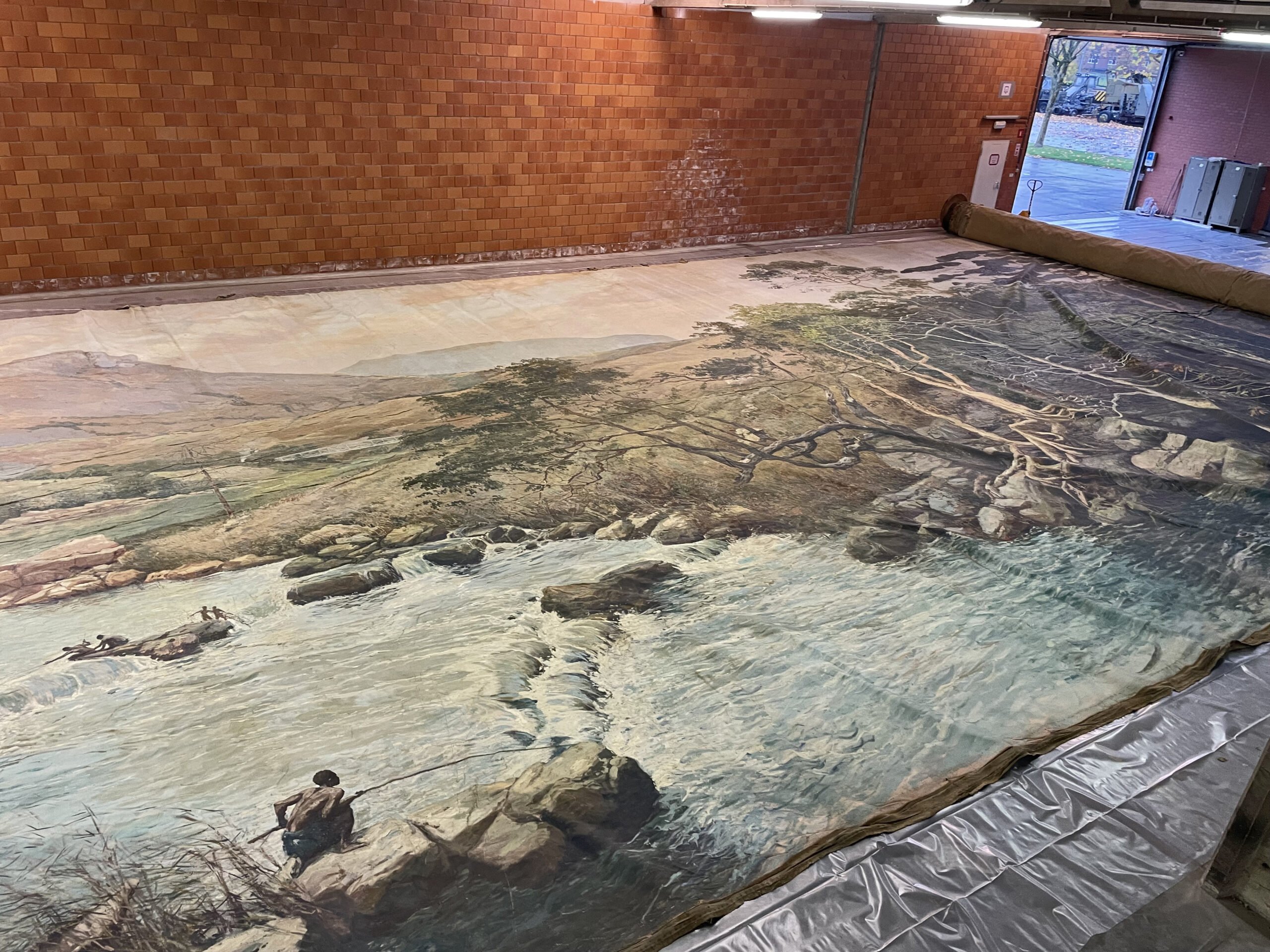[Introduction to a Conference on ‘Architecture and War’
– ETH Zürich 2-3.06.2017]
This lecture remained unpublished, and will become part of a book on the Spatialisation of Power in a more finished version (with footnotes and more referencing and all that), but, given the Coronacrisis, I think it is relevant to publish it now. Also as a background to some of my opinion pieces on the Coronacrisis that are so to speak postscripts to, or updates of, this text…
Abstract
If we take Agamben’s distinction between zoë (the reduction to bare life) and bios (the cladding of life with culture and rights) at heart, there could and maybe should be introduced a new concept: beside biopolitics… zoöpolitics. Foucault‘s idea of biopolitics is directed at the care for and control over the life of the population, as some of his main examples like the urban reorganisation of Nantes or the rise of social medicine testify. It is the new power leading to welfare state, as opposed to the old sovereignty, the power to take life, thanatopolitics. The reduction to bare life (one of the main themes of Agamben’s Homo Sacer cycle) is another form of power and sovereignty that should in our opinion not be called biopolitics for it is opposite in almost all its points: it is not cladding or catering but reducing and excluding, it is not directed at the population but at the individual. What we live is the end of biopolitics, the demise of the welfare state based on redistribution, and the rise of zoöpolitics. Indeed the refugee is excluded from the bios and from welfare biopolitics and is reduced to bare life in the most radical way: he or she is just a mere body. This form of radical exclusion from the polis and the bios, can lead to a return of thanatopolitics, the thousands of dead refugees that drowned on the mediterrean are the tragic and cynical testimony of this. After outlining this distinction between thanatopolitics, biopolitics and zoopolitics, and their dialectics this paper will focus on urbanism and war, where they can be seen at work in a raw form. Urbanism as a discipline, which is clear from the above mentioned example of Foucault (Nantes), is a paradigm, if not the paradigm of biopolics. The thanotopolitics that warfare constitute are returning today in urban warfare, it is subsumed under the neologism of urbicide. The urbanism of zoöpolitics is the main focus of this paper. The architecture of military occupation in Israel will be taken as an allegorical example for the urbanism that might await us. As our nation state increasingly want to exclude the ‘surplus humanity’ (Sygmunt Bauman) of refugees and poor by reducing them to bare life and the ecological disasters sharpen the dualization of society in haves and have nots, the rise of zoöpolitics seems inevitable.
Introducing Zoöpolitics
Biopolitics is the opposite of thanatopolitics. The old sovereign (of the ancient regime) takes life, the new sovereignty (the governance of the modern state) gives life. That is the well-known, lapidary formula which Foucault repeats in the fundamental passages where he introduces the term biopolitics[1]. In opposition to biopolitics as politics of life, he called the politics of death thanatopolitics. Many of his examples make it very clear what biopolitics is: the rise of medical care, hygiene and public health and the sanitation of cities is the kernel of the new sovereignty that gives life, that caters and assures life (the words Foucault uses), as opposed to the old sovereignty that takes life.
Of course, what Foucault sketched as a historical shift from the ancient regime to the modern state, is in fact a dialectics (as he was also well aware of, but did not use the word): both biopolitics and thanatopolitics are at work in our society. It is too obvious for words: warfare is and remains the manifestation of the sovereignty that takes life. In fact we have seen a very overt return of thanatopolitics: the permanent war on terror, terrorism, but more specifically the old top down sovereignty of taking life took on two forms recently: the massive ‘shock and awe’ of the Iraq invasion, and the much more insidious, almost surgical drone warfare. Both have something of divine violence, omnipresent/invisible lethal force striking from above.
Biopolitics is, as Foucault stresses, directed at a new entity: the population. Whereas discipline (Foucault’s first cycle of research) is directed towards the individual, biopolitics is directed towards the population as such, in its entirety, and it ‘caters for’ or ‘assures’ life. This has important consequences. It means that fingerprints, airport checks, iris scans, the entire security routines we have to undergo under the state of emergency due to the war on terror, is not to be captured, as the great Italian philosopher Giorgio Agamben does, under the term of biopolitics. It might be called biometrics, but it is not biopolitical.
However inspiring and paradigmatic the work of Agamben in general and the Homo Sacer-cycle in particular, his use of the term biopower constitutes a serious shift away from Foucault, precisely because in Agamben the sovereign is always the old, Schmittian sovereign who decides on the exception, ‘instaures’ the state of exception. In a sense Agamben dismisses the entire history of the modern state, with its division of powers, checks and balances, and above all, dismisses the welfare state, with its gigantic machinery of ‘catering for’ and ‘assuring’ life, as if non-existent.
Hence the proposal to add a logical third concept[2]: besides thanato- and biopolitics, zoöpolitics. That is completely in line with Agamben’s very own and rather influential if not crucial distinction between bios and zoè, cultured life (clad with language, culture, rights) and bare life (animal life, natural life, the body minus language, culture, rights). Biometric security technology checks us on the level of our bare life, and in doing so, in a sense reduces us to bare life. This reduction, which is omnipresent in politics of security and control, we could call zoöpolitics.
By introducing this new term of zoöpolitics (a Dutch sociologist, Willem Schinkel, has by the way proposed something similar), I try to show that biopolitics in the sense of Agamben is not biopolitics in the foucauldian sense, for it is not directed towards the catering and assuring of life but towards the control of (suspected) subjects and are not directed to a population, but towards the individual.
For those who like dialectical schemes: if thanatopolitics is the thesis, the right to take life of sovereignty and biopolitics is the antithesis (sovereignty that gives life), zoöpolitics could be seen as a sort of synthesis, it doesn’t take nor gives life, but controls it, by the reduction of the human life form (bios) to mere body (zoé). It can also often be an instable synthesis, the point were biopolitics can turn into thanatopolitics.
The most famous catch phrase of the entire Homo Sacer-cycle, probably, should, in a sense be rewritten: the camp is not the biopolitical but the zoöpolitical (and-at-times-thanatopolitical) paradigm of the planet. The concentration camp is the place where biopolitics turns into zoöpolitics, the extermination camp is the place where zoöpolitics shifts into thanatopolitics. Of course, any concentration camp can always be turned into a thanatopolitical apparatus. The same can be said of refugee camps, unfortunately, which should be apparatuses to protect and save lives, and therefore is are in essence biopolitical devices. There is a continuum of these three politics, and yet they are very different, and should be seen as (dialectical) poles.
Now we can start to look at our topic: urbanism and war. These three terms: biopolitics, thanatopolitics and zoöpolitics, will enable us to highlight three ideal-typical politics towards the city: urbanism, urbicide and security, control, with its strongest paradigmatic version: colonial occupation.
Urbanism as biopolitics
Urbanism is a paradigm of biopolitics, if not the paradigm. That is what Foucault meant, many of his examples are linked to it, the rise of medical care, hygiene and public health and the sanitation of cities was the kernel of the new sovereignty that gives life, that caters and assures life of this new entity called the population, as opposed to the old sovereignty that takes life. In Sécurité, territoire, population he explicitly takes the early urbanism of the late 18th century, with the case of Nantes, as an example, and aptly perceives that it is not sovereignty, discipline, order, symmetry that is at stake (which is done in cities like Richelieu), but circulation in the largest sense: circulation of goods, circulation of air, circulation of people.
An allegorical example of urbanism as biopolitics, as a tool for the public health of a population, is the covering of the river Senne in Brussels as a response to the cholera epidemic of 1863. The sanitation of the city, the healthcare and care for the wellbeing of the population through sewer systems, infrastructure and architecture is the essential drive of urbanism. I do believe that it is important to stress this: urbanism, urban design is one of the most paradigmatic forms of biopolitics, of care for the population, of the democratization of wellbeing, the rise of welfare state, of progress, of modernity in general. That is an important lesson, that has remained somewhat neglected, of Foucault’s genealogy of ‘governance’ and biopolitics in his courses at the Collège de France – particularly, the three mentioned volumes: Il faut défendre la société (1976), Sécurité, Territoire, Population (1977-78), Naissance de la biopoltique (1978-79).
Urbicide as thanatopolitics
If urbanism (as essentially the sanitation and organization of the city) is a, if not the paradigm of biopolitics, what is the urbanism of thanatopolitics? Urbicide in all its various degrees and forms could well be the one term that encapsulates it. And it is somehow the urban form of ethnic cleansing, genocide, politicide, etc. Indeed urbicide supplies the exact opposite of urbanism as a paradigmatic form of biopolitics as the assuring the life of the population, as it forms radical thanatopolitics directed towards the city.
Urbicide is a recent term, derived from genocide, it means literally ‘the killing of a city’. Although it was introduced by Marshall Berman to describe the transformation planned by Robert Moses in New York[3], it is an age-old phenomenon. The arch-model of sovereignty, God, destroyed several cities: Sodom and Gomorra were wiped from the earth, and Niniveh escaped his wrath only to teach the prophet Yonah a lesson… This divine tabula rasa, this erasure can be conceived of as the archetype for later sovereign erasure, the archetype of total war on the city.
In a similar vein the epic of epics, Homer’s Iliad, is the story of urbicide: the total destruction of Troy. This sort of total destruction was not only happening in a mythological past but also in real history: Thucydides relates that Melos, when it was defeated and refused to join the Athenian league, was totally erased, the male inhabitants killed and the women and children carried away as slaves (we should think more about those scenes when singing the praise of Athenian democracy). Another legendary but very real urbicide was the destruction of Carthage by its arch enemy Rome. It was not only levelled to the ground, but even the soil was poisoned with salt so it would be infertile for ages to come. Mark that in these examples urbicide is also politicide: the erasure of a political community, of an identity, of a culture. So destroying the urban fabric is often a way, if not the best way, to destroy the identity of a people, to wipe out the enemy, not only physically, but meta-physically so to speak: not only psychologically, but sociologically, even anthropologically.
Given this fact of politics as the fight over life and death of collective entities (according to Carl Schmitt) the city has been a stronghold, a military defence base since its beginnings (as all classical authors from Thucydides, to Mumford and McLuhan testify). The medieval fortress city was built to protect its population, the bourgeois within the bourg, the Bürger within the Burcht. But this has to be seen in a dialectical way, the castle in the city was not only a safe haven in case of siege by enemies, it was also the dungeon or prison for criminals and enemies of the king and was a stronghold against popular uprisings of the citizens. This ambiguity is crucial to all sovereignty. Sieges and sacking were part of subjugation. Charles the fifth subjugated Ghent and let the population walk about in ropes as if to be hanged, in an ultimate form of symbolic humiliation of the stubborn and proud population of the city where he himself was born. This strange political ritual gave the popular name till the present day to the inhabitants of the proud city of Ghent: the ‘stroopkes’ in Dutch, literally: ‘the nooses’. But the sacco di Roma, the plunder of Rome, is a more famous incident of ruthless subjugation, by the armies of this same Charles V.
Yet there was a period that warfare did not affect cities so much. Even if the famous Vauban fortifications testify to the city as stronghold (especially along the borders of France), warfare was often a matter of armies confronting each other in the open. Waterloo is an allegorical name for this sort of deadly war tournament in the middle of nowhere, far from the city. Historians could study this dialectic between Napoleons urbanism (I think particularly of Antwerp) and his attempt to spare cities from siege. The epic novel Peace and War of Tolstoy attests to this warfare in the open, the movement of armies confronting each other outside and sometime far away from the big cities. The plane and hills near Austerlitz are not exactly a central major city… It is in fact again in the 20th century that the city becomes heart and target of warfare, with the total destruction of Ypres as classical example from the first world war and the bombings of London and Berlin or Dresden and Hiroshima as the painful paradigmatic examples of the second.
Due to urbanization, MOUT, Military Operations in Urban Terrain, have come to the fore in recent decades as a most important branch of military affairs. The city, like in ancient times, is again the target, albeit often not in urbicidal logic, but more in a logic of control, subjugation, colonization. Especially the transformation from linear, symmetrical warfare of state against states, armies against armies, to non-lineair, asymmetrical warfare, states or coalitions of states against terrorist or insurgent networks, has contributed to this ‘urbanisation of war’.
Urban Security Regimes as Zoöpolitics
This brings us to our third angle. What is the architecture or urbanism of zoöpolitics? It is our hunch that this is the most basic form of urban politics today, even if it has many faces. It is a combination of the smart city, the security routines and camera’s everywhere, and of course, the closed detention centres and (concentration) camps for ‘illegal migrants’ and refugees, that are so topical today. If urbanism is biopolitical and urbicide is thanatopolitical, then militarized control and occupation could be called zoöpolitical.
We take Israel’s ‘architecture of occupation’ (as Eyal Weismann has called and described it in Hollow Land) as a model here. Our point is that this occupation supplies more and more the model of our securitized urban spaces. The devices of this control like checkpoints or biometrical security routines are based on zoöpolitical screening and isolating the individual as body, as bare life, often reducing a person to his/her frail animality (zoë) and stripping him/her from his/her citizenship or cultural being, her/his being human (bios). One can highlight the essential process of this apparatus of occupation by stressing it zoöpolitical character. It is precisely because of the reduction to zoë that it can be so oppressive: a way of humiliating the colonized.
In this repressive urbanism of occupation zoöpolitics and thanatopolitics form poles in a continuum, like in the camp (the original and literal meaning of a concentration camp: where you isolate or concentrate internal ‘enemies’ of all sorts: beside Jews and Roma-people, gays and communists, let’s not forget that). The refugee camp can at any time transform from a detention centre, like an army camp can easily be turned into a extra-legal prison like Guantanamo and even turn into an outright ghetto under siege. Desheisheh Camp in Bethlehem, one of the epicentres of resistance, was totally locked during the second intifada. Of course this logic of incursion and lock down can be extended to all occupied territories: the sieges on Ramallah, Nablus and Jenin during the second intifada are eminent cases of these shifts. This shift is also visible on a larger scale.
By retreating from Gaza, Israel clearly shifted from the zoöpolitics of occupation to the thanatopolitics of outright siege and destruction (calling Gaza a ghetto is not, alas, a metaphor). Operation Cast lead and Operation Protective edge were shock and awe attacks to the aim to massive destroy infrastructure and massively kill people. This retreat is allegorical for the shift from zoöpolitics to thanatopolitics.
We live in times of ethnic cleansing, not only in Israel, but all over the Middle East. In Africa, at least in the region of the big lakes, it is the disintegration of failed states, the state of lawlessness, indeed at times the state of nature, in overt civil war, ethnic cleansing and alas, outright genocide, like in Rwanda. In Latin America and elsewhere in Africa and Asia it is the economic cleansing by new enclosures and land grabs by the agro-and biofuel industry of the multinationals… These massive and ongoing, if not very well covered events (crimes against humanity that seem to largely escape the mainstream press) are not to be captured under the term of biopolitics, on the contrary, it is zoöpolitics and thanatopolitics, but not biopolitics as the giving, and catering for and assuring life of the population as such.
In order to understand the dialectics of war and cities in a philosophical frame we should learn from Deleuze and Guattari‘s improvisation on nomadology from Milles Plateaux: the war machine of the nomads operating in smooth space and the sedentary state operating in striated space. Of course, the state captured and learned from the nomadic war machine, in a sense, the army is in essence a nomadic war machine. In any case, the opposition of espace lisse and espace strié is most useful to understand urban warfare. The city, especially older cities, with their dense urban tissues, represent a blocked space, a space full of resistance, as opposed to the smooth space without hindrances of the open field. Here it is inevitable to see haussmannisation also as a response to the urban barricade battles: on the large straight boulevards it was easy for the army to move around the city and impossible almost to make barricades. In that vein, mostly to subjugate an uprising, the colonizer or occupier will destroy part of the urban fabric and make easy entrances for the troops. This way of drastic ‘haussmannisation’ was famously introduced by the British colonizer, cutting a big anchor shaped form in the urban fabric of Jaffa, by ‘Operation Anchor (in 1936).
The ‘walking through walls’ is a more recent way to invade the dense city fabric of old cities and camps. This ‘Walking through walls’ (to refer to Eyal Weisman s Hollow Land once more) of the Israeli army in Jenin and Nablus has become almost iconic. By penetrating via holes cut through interiors the Israeli army inverted the logic of space: the build fabric as smooth space for the war machine of the Israeli, the street as striated space for the Palestinian resistance. Inspired by Deleuze the Israeli army inverted the street (smooth space) and the build fabric (striated space) by cutting and moving through walls, moving like worms through the flesh of the cities, moving invisibly through private space, surprising and encircling the resistance from within so to speak and forcing the resistance fighters unto the streets.
In a more general frame Israel has put an apparatus in place that creates smooth space for the colonizers, an archipelago of well-connected cities and settlements for the Israeli, and a set of disconnected enclaves for the Palestinians. Israeli colonists can drive the same distance in minutes, a distance, which for the occupied Palestinians costs hours, if not an entire day. The matrix of area’s (A, B and C), the wall, the checkpoints, make of the territories a set of isolated enclaves, that at any moment can be sealed off. That is the essence of Israeli apartheid. Alessandro Petti pointed out (in his book Arcipelaghi e enclave. Architettura dell’ordinamento spaziale contemporaneo) that this double geography of Israel might be paradigmatic for our future spatial order. Eyal Weizman has mapped in Hollow Land all the three-dimensional strategies to put this matrix into place.
In this matrix of control the population is reduced to bare life: the revolving doors at the checkpoints encapsulate this reduction to being just a body. The recent habit of arresting children at night is a way to traumatize, not only the children themselves, but the entire community, and to turn them into helpless traumatized people, at mercy of the occupier. The zoöpolitical logic of control can be reverted to thanatopolitics and urbicidal warfare, as soon as it serves the overall political agenda: as said, the ‘decolonisation’ of Gaza was the prelude to its total ghettoization (starvation included) and the ‘shock and awe’ military attacks on it.
But this zoöpolitical phase of (dis)urbanism (with its thanatopolitical extremes) is becoming generalized. The opposition of striated space and smooth space points also to one of the big paradoxes of our time, the paradox of globalization: free traffic of commodities in the space of flows and the return of hard borders to stop the free traffic of people. The contemporary state nor the so called super states, nor contemporary capitalism, are able to come to grips with this dilemma. Hence the return of hard borders in an attempt to turn the smooth space of globalization, the ‘space of flows’ (of Castells), into the immobilizing hindrance of striated space. In any case, the dealings with migration will become more and more militarized.
To understand this condition as one of the results of globalisation the late Zygmunt Bauman might help us. In his book Liquid times, the second chapter on ‘humanity on the move’ is a chilling account of the fact that modernity and globalization have produced a tremendous amount of ‘human waste’(meaning wasted humans): a surplus humanity. But whilst in modern times they could be disposed of in faraway territories (America, Australia), there is no blank spaces left on the map to send them to or let them migrate to. The combination of population growth, neoliberal capitalism (with its by now universally accepted dualization and increasing inequality), and war politics, has produced all sorts of people without place, perspective, means of survival: illegal migrants, unemployed youth (also often of migrant background). We find this ‘human waste’ in ghetto’s, in no man’s lands, in failed states, as refugees of wars, of civil wars, as ecological refugees, and of course also as economic refugees, impoverished people seeking a better future, like so many emigrants to America from the poorest regions of Europe (Ireland, Sicily) before them, more than one would think to escape hunger (like in the gabbing account of the novel Angela’s Ashes of Frank McCourt).
The most concrete image of this human waste is the 1000s of people drowned in the Mediterranean trying to make it to Europe. According to UNHCR in 2015 there were 3771 deaths, in 2016 some 4000. As a UNHCR official said, “From one death for every 269 arrivals last year, in 2016 the likelihood of dying has spiralled to one in 88.”[4]. In 2019 the count is some 1200[5]. But over the last five years (2014-2019) according to UN sources 18.000 persons drowned[6]. This sort of unbearable calculus gives an idea of zoöpolitics as a counterpart to thanatopolitics. Another concrete image of ‘surplus humanity’ is the 20 million people, chronically facing starvation (since 2017) in Nigeria, South Soudan, Somalia and Yemen. It is in the news for a day or two and then disappears.
So, to make a long and sad story short, this ‘surplus humanity’ has to be controlled and processed in a zoöpolitical way (at best). This new sort of urban form and society I called the capsular Civilisation in the first volume of my millennium trilogy, my cyberpunk philosophy trying to look the ugly 21st century in the face.
Israel is the extreme, the ultimate paradigm, the model state (or state-model) so to speak, of this security urbanism, this multidimensional spatial colonization and apartheid. And Israel is, moreover, often involved in supplying know how and supplying the devices to make this apparatus or matrix of military subjugation work, all around the world: from the pacification of Bagdad after the invasion of Iraq, the infrastructure and technology of controlling borders against illegal migrants, to the security routines at Airports. It supplies the model and the business-model of ‘disaster capitalism’ (as Naomi Klein has aptly termed it). All this infrastructure of control is made of what one could call infra-architecture.
The rise of infra-architecture
In line with Baudrillard’s concept of the hyperreal, of hyperreality we coined (in a text called Meditations on razor wire, written with Michiel Dehaene[7]) the concept of the infra-real, of infra-reality: it is that part of the real world that is invisible in the simulations and simulacra that surround us, that are unrepresentable, or repressed: the slums, the warzones, the land grabs and enclosures, the ongoing colonisations, the overcrowded flooding low lands in Bangladesh and elsewhere, the poverty, the famine, etc. The walls and fences we build are meant to keep hyperreality and infrareality apart. Of course this hyperreality was very much he ideal world of spectacle, the inside of the matrix, Baudrillard was talking about, but now the bubble of simulation and hypernormality is bursting: one could say that exactly nowadays the split between hyperreality and infrareality is breaking down. All the more reasons to build fences and retreat in our virtual world of screens and camera surveillance and other security routines. The reality of war is always infrareal, and forever and a day, in spite of all the war films, not representable, like it is and because it is unspeakable. It is the dark side of landscape, of architecture, of urbanism, of politics, of anthropology, of the polis, the human species in general.
I made a link between hyperreality and the hyper-architecture of iconic buildings, the so called star architecture (subsequently shortened to ‘starchitecture’), and between infra-reality and what I then logically called infra-architecture: I thought of slums, camps, detention centres, fences, checkpoints, etc. At first this binary opposition seems dualistic, but it should be conceived of as dialectical poles of architecture. It is a continuum, but, it has its extremes. Military architecture is one such extreme. It is mere infrastructure. The zero degree of all architecture.
Infra-architecture is the architecture of bare life, the architecture of zoöpolitics. All military architecture is infra-architecture, and all military intervention reduces the existing build fabric to infra-architecture. This suggests, on an ethical note, that the architect (a profession devoted to biopolitics, like that of the urbanist) has no business in building these devices or in collaborating in the making of these apparatuses. I would dare to suggest that in most architecture that will deal with migration and security in the 21st century, we will see zoöpolitics at work on a large scale and we will be confronted with a lot of infra-architecture.
The end of biopolitics (conclusion)
The rise of neoliberalism, which Foucault treated in his Naissance de la biopolitique, might in fact be the beginning of the end of biopolitics: the catering for life of the new sovereignty that culminated in the welfare state (as a redistribution system) shifted towards privatization, deregulation and ‘flexibilisation’. ‘Social security’ was replaced by ‘responsibilisation’: you are responsible to cater and assure your own life. The end of biopolitics is very concrete, in a sense, under neoliberalism ‘care’ becomes your own problem: that is one way to understand the whole idea of ‘responsabilisation’ of the citizen (as individual). We see the rise of a new disciplinary society in a sense (the interiorization of rules via institutions and universal competition and the omnipresence of the managementjargon and ideology) that is at the same time a society of control (as Deleuze called it): the exteriorisation of (para)military apparatus of security. With terrorism the state of exception has become the rule (the army is almost five years after the terrorist attacke of 2016 still patrolling in the streets and stations of Belgium), so Agamben was right. ‘The militarization of urban space’, Mike Davis was warning us for in his City of Quartz, has come true, in a more literal sense than even he could have thought. The craze of SUV vehicles that now have become the standard form of car, testifies to this militarisation (which is not only irresponsible for it causes more mortal victims in accidents, but also is irresponsible in ecological terms as these cars are heavier and pollute more).
With the demise and wilful destruction of the welfare state, the biopolitical sovereignty comes to an end, like urbanism in a sense has come to an end and state organized public health care, and social security, public education and free culture, are under threat or being abolished by subsequent waves of austerity policies. The rise of the security industry and the disintegration of social security are two faces of the same coin. The demise of the welfare state is correlated to the rise of ‘armed government’ (I remind you that this is the term proposed by Bart De Wever, the most powerful politician in Belgium, who in the same breath, proposed to inscribe the state of exception into the constitution). This new form of governance cannot be simply captured in Foucault’s very localized, historical transition from the old sovereignty of the ancient regime and the biopolitics of the modern state (culminating in the welfare state). The zoöpolitical control will increase as information technology and cyberspace is enclosing us.
For Foucault biopolitics is directed towards the population and the population is limited to the territory, that is, correctly the biopolitical inscription of the new born (natus) into the nation-state. In the age of deterritorializations and reterritorializations, the age of migration and mobility, biopolitics is literally losing ground. The ecological crisis is aggravating all this. Migration frays the biopolitics of the welfare state (in Europe) to the breaking point, so walls and camps and mobile border controls, security routines, become a matrix of surveillance that has to defend this biopolitical inside space from the dangerous outsiders. They make an apparatus of zoöpolitics, of the retention and detention of bodies that have lost or are refused the status of citizen (bios) but that are reduced to bare life (zoé). This zoöpolitical control of ‘illegal migrants’ is always on the verge of shifting to thanatopolitics, but also maybe the only way (as said) to avoid thousands drowning in the Mediterranean.
According to Alliez and Lazarato, in their devastating book Guerres et Capital, War, a multicity of wars, civil wars, race wars, economic wars, colonial wars, dispossessions, etc., are the essence of capitalism. In any case, Urban warfare and urbicide are on the rise, from Sarajevo to Fallujah and Gaza. With the words of Lebbeus woods: ‘Sarajevo was only the beginning of a new trend resulting from globalization, a proliferation of regional, often insurgent-driven wars that have resulted in the piece-by-piece destruction of cities and the killing of their inhabitants.’ The war on terror (and terrorism as it counterpart) as symmetrical and nonlinear warfare will only enhance this urbanization of warfare and this militarization of urban space.
The conclusion could we be that we live the end of biopolitics, we witness the rise of zoöpolitics and, alas, also an unseen proliferation, if not metastasis of thanatopolitics.
[1] (these passage are in a sense few and rather shortish: at the end of La volonté de savoir and Il faut défendre la société, )
[2] For a more lengthy argument on biopolitics and the introduction of the term zoopolitics, see my text ‘The negation of the state of nature’ in Entropic Empire, On the City of Man in the Age of Disaster, Rotterdam: Nai010publishers, 2012.
[3] Also the modernist tabula rasa comes to mind, Corbusier’s Plan Voisin in Paris for instance, or the urbicidal “Manhattan plan”, that destroyed the Brussels North Quarter.
[4] http://www.unhcr.org/afr/news/latest/2016/10/580f3e684/mediterranean-death-toll-soars-2016-deadliest-year.html
[5] https://missingmigrants.iom.int/region/mediterranean)
[6] https://www.voanews.com/europe/un-migrant-refugee-death-toll-mediterranean-tops-1000-6th-year
[7] For the exhibition Visionary power of the Rotterdam Architecture Biennial 2007, Also in my book Entropic Empire Nai010 publishers, Rotterdam, 2012.





